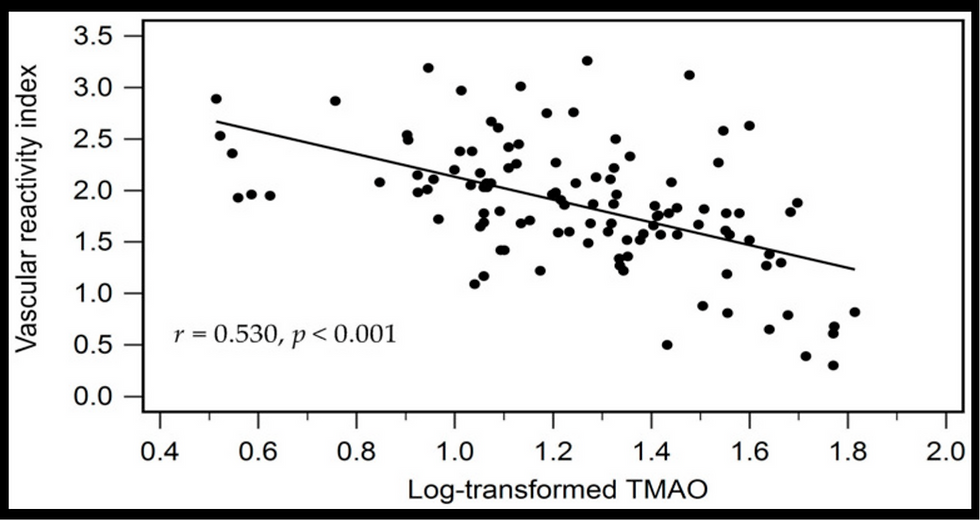Relations between digital thermal monitoring of vascular function, the Framingham risk score, and...
- heartlung
- Jan 9, 2023
- 2 min read
Relations between digital thermal monitoring of vascular function, the Framingham risk score, and coronary artery calcium score
Naser Ahmadi, Fereshteh Hajsadeghi, Khawar Gul, Jackson Vane, Nudrat Usman, Ferdinand Flores, Khurram Nasir, Harvey Hecht, Morteza Naghavi, Matthew Budoff
J Cardiovasc Comput Tomogr 2008 Nov;2(6):382-8.
Abstract
Background: Digital thermal monitoring (DTM) of vascular function was shown to correlate with the presence of known coronary artery disease (CAD).
Objective: We evaluated whether DTM can identify at-risk, asymptomatic patients with significant coronary artery calcium (CAC) or increased Framingham risk score (FRS).
Methods: Two hundred thirty-three consecutive asymptomatic subjects (58 +/- 11 years; 62% men) without known CAD underwent DTM, CAC, and FRS calculation. DTM measurements were obtained during and after a 5-minute suprasystolic arm-cuff occlusion. After cuff-deflation temperature rebound (TR) and area under the temperature curve (AUC) were measured and correlated with FRS and CAC.
Results: TR was lower in patients with FRS > 20% and CAC >or= 100 as compared with FRS < 10% and CAC < 10, respectively (P < 0.05). After adjustment for age, sex, and traditional cardiac risk factors, the odds ratio of the lowest compared with the upper 2 tertiles of TR was 3.96 for FRS >or= 20% and 2.37 for CAC >or= 100 compared with low-risk cohorts. The area under the receiver operating characteristic (ROC) curve to predict CAC >or= 100 increased significantly from 0.66 for FRS to 0.79 for TR to 0.89 for TR + FRS.
Conclusions: Vascular dysfunction measured by DTM strongly correlates with FRS and CAC independent of age, sex, and traditional cardiac risk factors and was superior to FRS for the prediction of significant CAC.
Read Full Text Here: https://www.journalofcardiovascularct.com/article/S1934-5925(08)00614-X/fulltext
Accompanying Editorial: Anatomy, physiology, or epidemiology: Which is the best target for assessing vascular health?
Jeffrey T Kuvin
J Cardiovasc Comput Tomogr. 2008 Nov;2(6):389-91.
Impaired vascular function occurs early in atherogenesis, often before luminal narrowing or calcification. Endothelial cells are critical to the atherosclerotic process because they form an integral barrier between the circulating blood and the vessel wall. In addition, the endothelium plays a pivotal functional role by performing regulatory functions, such as vasomotion, platelet activation, leukocyte adhesion, and thrombosis. Impaired endothelium-dependent vasorelaxation can be detected early in the development of atherosclerosis by measuring the vascular response to pharmacologic and physiologic stressors. Numerous pharmacotherapies and lifestyle alterations that improve cardiovascular outcomes have also been to improve vasomotor function. Thus, testing the vasculature early for signs of dysfunction seems to be an attractive means of evaluating cardiovascular risk.
![Lipoprotein(a) levels predict endothelial dysfunction in maintenance hemodialysis patients: evidence from [VENDYS] vascular reactivity index assessment](https://static.wixstatic.com/media/dac531_5285607cc591409a9d83746f042af7c6~mv2.png/v1/fill/w_980,h_980,al_c,q_90,usm_0.66_1.00_0.01,enc_avif,quality_auto/dac531_5285607cc591409a9d83746f042af7c6~mv2.png)


Comments